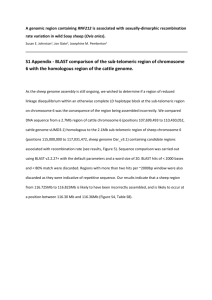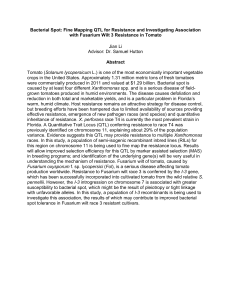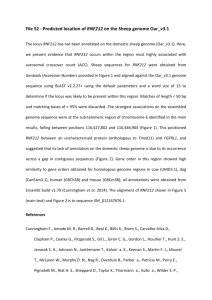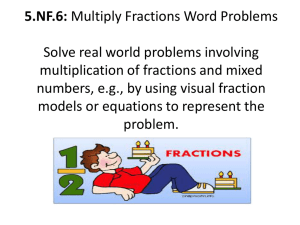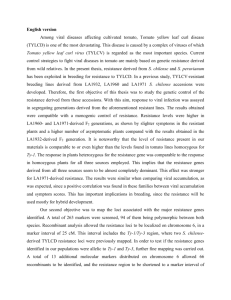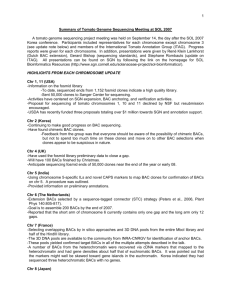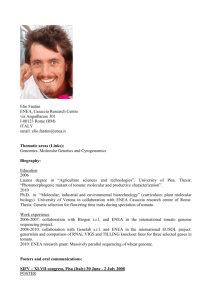doc - Sol Genomics Network
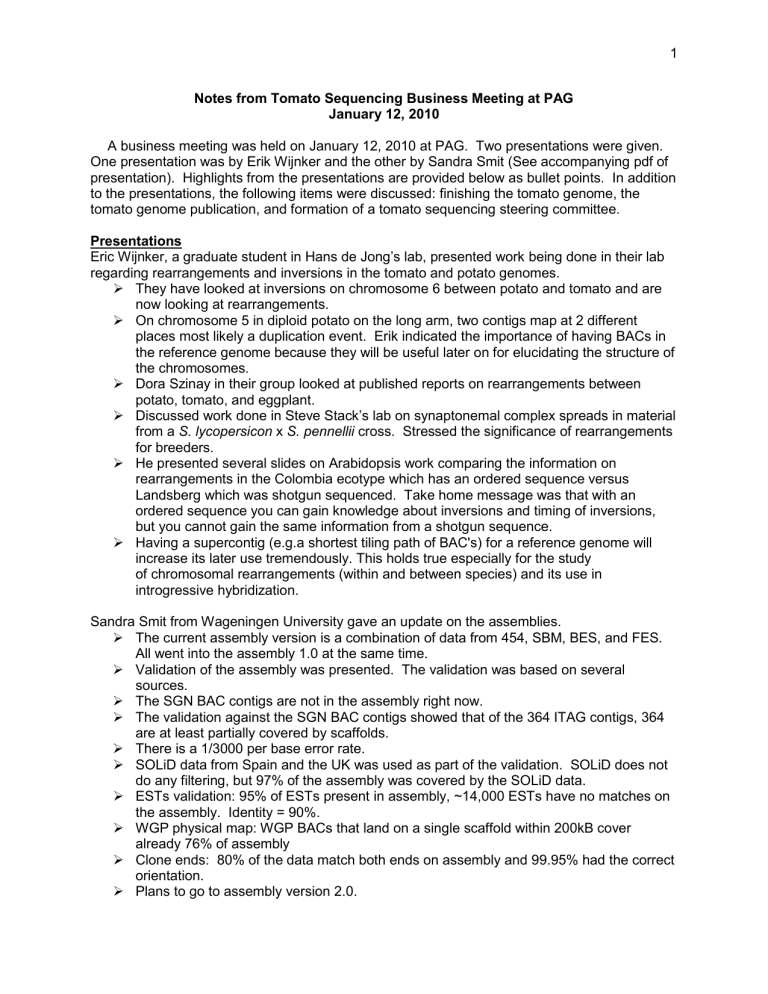
1
Notes from Tomato Sequencing Business Meeting at PAG
January 12, 2010
A business meeting was held on January 12, 2010 at PAG. Two presentations were given.
One presentation was by Erik Wijnker and the other by Sandra Smit (See accompanying pdf of presentation). Highlights from the presentations are provided below as bullet points. In addition to the presentations, the following items were discussed: finishing the tomato genome, the tomato genome publication, and formation of a tomato sequencing steering committee.
Presentations
Eric Wijnker , a graduate student in Hans de Jong’s lab, presented work being done in their lab regarding rearrangements and inversions in the tomato and potato genomes.
They have looked at inversions on chromosome 6 between potato and tomato and are now looking at rearrangements.
On chromosome 5 in diploid potato on the long arm, two contigs map at 2 different places most likely a duplication event. Erik indicated the importance of having BACs in the reference genome because they will be useful later on for elucidating the structure of the chromosomes.
Dora Szinay in their group looked at published reports on rearrangements between potato, tomato, and eggplant.
Discussed work done in Steve Stack’s lab on synaptonemal complex spreads in material from a S. lycopersicon x S. pennellii cross. Stressed the significance of rearrangements for breeders.
He presented several slides on Arabidopsis work comparing the information on rearrangements in the Colombia ecotype which has an ordered sequence versus
Landsberg which was shotgun sequenced. Take home message was that with an ordered sequence you can gain knowledge about inversions and timing of inversions, but you cannot gain the same information from a shotgun sequence.
Having a supercontig (e.g.a shortest tiling path of BAC's) for a reference genome will increase its later use tremendously. This holds true especially for the study of chromosomal rearrangements (within and between species) and its use in introgressive hybridization.
Sandra Smit from Wageningen University gave an update on the assemblies.
The current assembly version is a combination of data from 454, SBM, BES, and FES.
All went into the assembly 1.0 at the same time.
Validation of the assembly was presented. The validation was based on several sources.
The SGN BAC contigs are not in the assembly right now.
The validation against the SGN BAC contigs showed that of the 364 ITAG contigs, 364 are at least partially covered by scaffolds.
There is a 1/3000 per base error rate.
SOLiD data from Spain and the UK was used as part of the validation. SOLiD does not do any filtering, but 97% of the assembly was covered by the SOLiD data.
ESTs validation: 95% of ESTs present in assembly, ~14,000 ESTs have no matches on the assembly. Identity = 90%.
WGP physical map: WGP BACs that land on a single scaffold within 200kB cover already 76% of assembly
Clone ends: 80% of the data match both ends on assembly and 99.95% had the correct orientation.
Plans to go to assembly version 2.0.
2
Presented decisions from Schipholl (see slide #14), including the updated timeline.
Put version 1.02 up on SGN in addition to the current 1.oo version instead of replacing.
Annotation can start at the end of March.
Discussion items
Finishing the tomato genome - discussion led by René Klein Lankhorst
Transition from the chromosome by country format, basically, remove the flags from each individual chromosome. It was suggested to keep the flags, but incorporate them into some other area of the chromosome image that represents the sequencing project.
The flags can stay on the chromosome image, but it was decided that the principle of each country sequencing its own BACs would be abandoned and instead, batches of
BACs to be seqeunced would be distributed over partners who have the budget and the capabilities to sequence them.
As for gap-filling in the existing assembly, an effort should be made to assemble the current remaining fraction of 150 Mb of un-assembled DNA. This fraction very likely consists mainly of very high repetitive DNA and it will not be possible to assemble it all.
But at least we should look into it and see how far we can get, for instance by using alternative assembly strategies and/or alternative assembly algorithms.
Divide the remaining BACs evenly amongst countries. However, financial situations need to be taken into consideration. René will be happy to coordinate this. Everyone agreed.
Discussed gap filling. Need to come up with a strategy to fill gaps. It was recognized that we will not be able to close all. It was estimated that there will be 70,000 gaps.
Doil Choi shared some information on gaps on chromosome 2.
941 gaps on chromosome 2
intra-scaffold gap size ranges from 1.5 - 9.2 kb
inter-scaffold gap size goes up to 30 kb
Invite SOL community to see who is willing to participate to bring the tomato genome to a high quality, gold standard. Will announce in March issue of Sol Newsletter.
Before we can decide all that is needed to finish the genome, we need to determine how many gaps are on each chromosome.
Once we have assembly version 2.0, we will have a better idea of what is ahead.
Tomato genome publication – discussion led by Joyce Van Eck
In India, we discussed the potential components of the publication and identified task leaders. Sometime after the meeting a document was circulated to task leaders.
To date, we have received comparative maps from Silvana Grandiliro. Plus, we know that Steve Stack and Hans de Jong are working together on the FISH section.
There was discussion on the idea of possibly not focusing on the tomato fruit in the publication, but focusing on interesting features of the genome itself. However, based on conversations Chris tian and René had with Science and Nature, they indicated a focus on biology.
It was agreed that the publication is evolving and once we have more assembly data and possibly annotation we will have a better idea for the focus of the paper.
Proposed tomato sequencing steering committee – discussion led by Giovanni Guiliano.
Giovanni made the following points:
The new SOL co-chair team has to manage the coordination of the projects of the entire community.
3
There is therefore a need for a tomato genome steering committee, to coordinate the next steps in both finishing the tomato genome and shaping the manuscript, and to allow a division of tasks between people.
There is a need for periodic consultations in which the whole community can call in and discuss.
There is a need for a fair and balanced representation of all members of our consortium both through participation in the discussions, and through sharing the credit for the work done, both in publications and in presentations at international meetings.
After a brief discussion, it was agreed that Giovanni will organize periodic conference calls where the whole community will discuss the evolution of the project and identify new action items. A steering committee should emerge from these discussions, whose members would have the task to coordinate the work and monitor the progress
.

